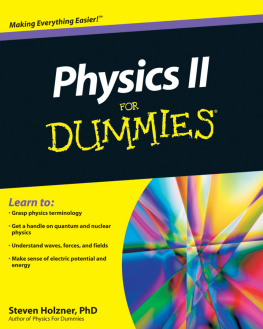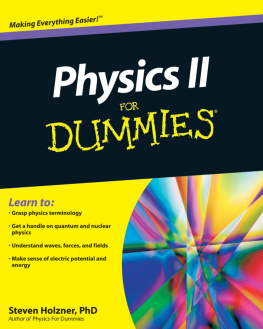"Physics without prior knowledge" is the English translation of the German book "Physik ohne Vorkenntnisse". Some passages in the book therefore focus on the European region. This does not have an impact on the content, the modes of action and general understanding.
Benjamin Spahic M.Eng was born in Germany in 1995 and grew up in a village with 8,000 inhabitants near Karlsruhe. His passion for technology is reflected in his studies as an electrical engineer with a focus on information technology at the University of Applied Sciences in Karlsruhe.
He then deepened his knowledge in the field of regenerative energy production at the Karlsruhe University of Applied Sciences.
Konradin-Kreutzer-Str. 12
Amazon Media EU S. r.l., 5 Rue Plaetis, L-2338, Luxembourg
- Foreword
Physics is discussed everywhere, whether on public television, at school and university or in private circles. But what is physics exactly? How can it be distinguished from mathematics and what do we need it for?
Physics describes a super-area of many sub-areas of the technical world. Velocities, electrical currents, mechanical forces or light rays and their refraction. All these areas are subsumed under the term physics. And that makes sense, because the description of all these natural laws can be calculated in the same way.
We encounter physics every day. Just think of all the achievements that have been made thanks to breakthroughs in physics. This doesn't necessarily just refer to major events like landing on the moon, but those that get us through life each day.
In the morning, we are woken up by our smartphone or digital alarm clock. The aerodynamics of our car, together with the physical calculation of acceleration and braking forces, get us to work safely and quickly. Almost every new type of technology is based on fundamental, physical planning and calculation.
Physics is important and unavoidable in many areas of life.
Despite its importance, however, there is one big problem: the enthusiasm for understanding and learning physics is very limited in society. Only a small, elite section of society studies the subject area.
Since you bought this book, it can be assumed that you are interested in the basics of physics. Maybe you are still a pupil who is considering studying physics, maybe you are an industrial engineering student who wishes to catch up, or maybe you are a retiree who finally wants to catch up on what is not taught well enough at school and in your studies. In any case, you won't regret getting to grips with the subject matter.
When one deals with physics for the first time, one finds various books on the subject, some of which consist of over 500 pages. Of course, these books also have their raison d'tre, for example if you want to scrutinise and understand the subject matter down to the smallest detail, but for the majority of those interested, this is neither necessary nor effective.
However, these books are completely unsuitable for newcomers. They contain pages of mathematical derivations that are forgotten after a week. As a result, confusion quickly spreads. This is demotivating and quickly leads to many people giving up on the subject and reinforces their belief that "physics is not for me". This is not because of the readers, but because they simply do not belong to the book's target group. You don't have to be an Einstein to understand the basics, you just have to be motivated to deal with the subject matter, as Einstein himself already knew.
"I have no special talent, I am just passionately curious.
-Albert Einstein
With the right guide and a dose of motivation, anyone can understand the basics in no time. It is precisely from this mindset that this book has emerged.
It is a beginner's guide for inquisitive people who want to learn the basics of physics without much prior knowledge.
Prerequisites and level of knowledge:
This book is suitable for anyone with a basic enthusiasm for technology and mathematics. The basic knowledge of mathematics, such as transforming equations or the relationships between sine and cosine, is important and is therefore repeated in the first chapters. The repetition only serves to refresh the level of knowledge. This is followed by an introduction to the basics of physics.
It is not assumed that one already knows physical units or formulas -- even if this will certainly be the case for one or the other. The focus is on understanding and applying the correct formulae - without prior knowledge. For this purpose, complex physical relationships such as derivatives and integral calculus are simplified.
For a better structure, the following symbols can be found throughout the book:
 Arithmetic symbols: here the subject matter becomes more complex. A digression or derivation is given. The derivation of a topic is helpful for understanding, but it is not essential and is intended for reference.
Arithmetic symbols: here the subject matter becomes more complex. A digression or derivation is given. The derivation of a topic is helpful for understanding, but it is not essential and is intended for reference.
 Light bulb: here the key points of a chapter are summarised. These statements are good for reference or when reviewing a topic area.
Light bulb: here the key points of a chapter are summarised. These statements are good for reference or when reviewing a topic area.
 Attention: common mistakes are mentioned here. It is shown where and why one often encounters obstacles or makes the wrong assumptions.
Attention: common mistakes are mentioned here. It is shown where and why one often encounters obstacles or makes the wrong assumptions.
 Calculator: sample calculations or comprehension questions to follow up and help you to revise and take in the content.
Calculator: sample calculations or comprehension questions to follow up and help you to revise and take in the content.
Notation in this book:
Terms in bol d : Terms that are to be newly introduced or particularly emphasised.
Italicised terms : Variable names, functions and other terms that are to be set aside from the continuous text.
Now I hope you enjoy reading and immersing yourself in physics!
- Basics of mathematics
When you immerse yourself in physics, juggling terms and equations becomes the order of the day. Mathematics provides us with the basis for this. It serves as a tool.
Just as a carpenter needs to know how to use a hammer and chisel, we need to know how to properly summarise or simplify formulas. Basic arithmetic laws, function types and number systems are covered below. Those who have obtained a university entrance qualification will already know most of the areas, but partial aspects are also discussed that one only learns at technical high schools, for example.
Experience has shown that mathematics is a necessary evil, which is why each subject area is only dealt with as far as it is important for the understanding of this book. This includes first and foremost the conversion or solving of equations and the notation of powers.
2.1. Solving equations









 Arithmetic symbols: here the subject matter becomes more complex. A digression or derivation is given. The derivation of a topic is helpful for understanding, but it is not essential and is intended for reference.
Arithmetic symbols: here the subject matter becomes more complex. A digression or derivation is given. The derivation of a topic is helpful for understanding, but it is not essential and is intended for reference. Light bulb: here the key points of a chapter are summarised. These statements are good for reference or when reviewing a topic area.
Light bulb: here the key points of a chapter are summarised. These statements are good for reference or when reviewing a topic area. Attention: common mistakes are mentioned here. It is shown where and why one often encounters obstacles or makes the wrong assumptions.
Attention: common mistakes are mentioned here. It is shown where and why one often encounters obstacles or makes the wrong assumptions. Calculator: sample calculations or comprehension questions to follow up and help you to revise and take in the content.
Calculator: sample calculations or comprehension questions to follow up and help you to revise and take in the content.